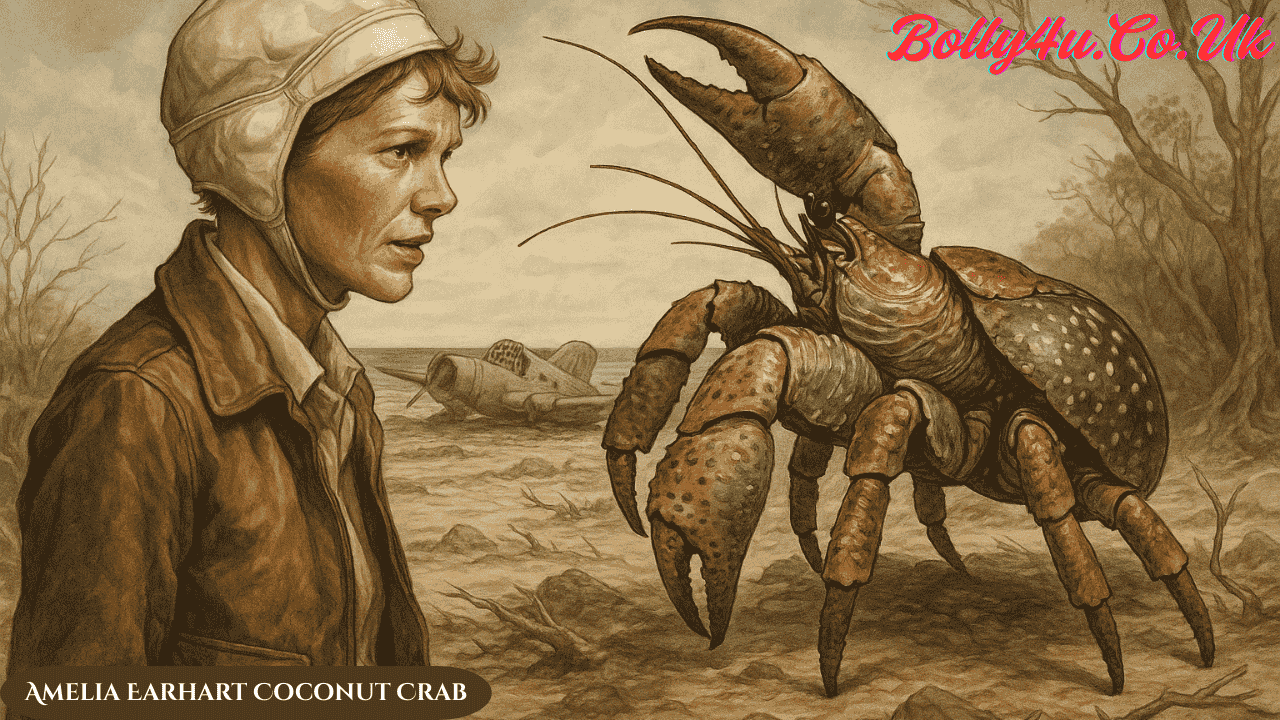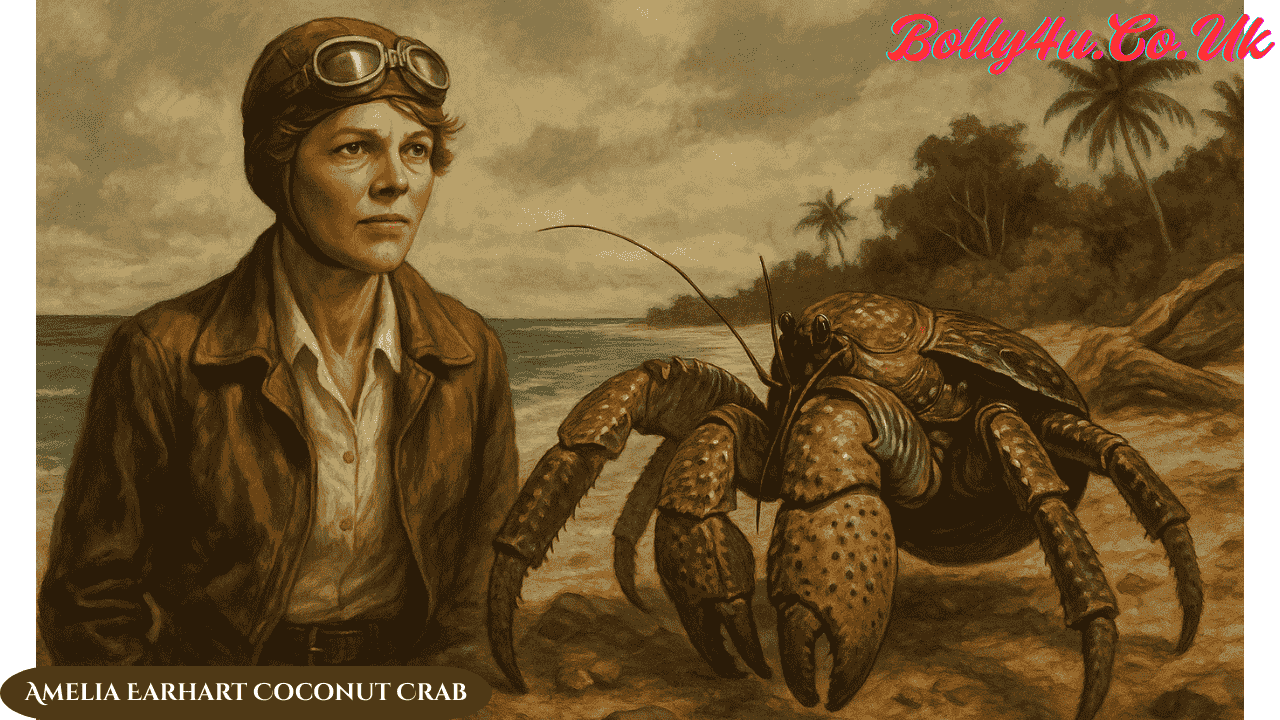Amelia Earhart Coconut Crab Mystery

The Enduring Mystery of Amelia Earhart and the Coconut Crab Theory
Few mysteries have captivated the world quite like the disappearance of famed aviator Amelia Earhart in 1937. As the first woman to fly solo across the Atlantic Ocean, Earhart’s life was one of daring ambition and groundbreaking achievements. But her disappearance over the Pacific Ocean during her attempt to circumnavigate the globe has given rise to countless theories.
Among these, one particularly eerie and fascinating hypothesis has gained attention: the Amelia Earhart coconut crab theory. This theory suggests that the powerful coconut crab may have played a role in the final chapter of her life—or at least in the mystery surrounding the fate of her remains. This article explores the intersection between aviation history, forensic speculation, and natural science, taking a deep dive into the question: What could coconut crabs have to do with the disappearance of one of history’s most iconic aviators?
Amelia Earhart’s Final Flight: A Brief Recap
Before diving into the coconut crab theory, it’s essential to understand the context of Amelia Earhart’s final flight. In 1937, Earhart set out with navigator Fred Noonan to fly around the world along the equator—a bold and ambitious route. On July 2, the pair left Lae, Papua New Guinea, en route to Howland Island, a remote speck in the Pacific Ocean.
However, they never arrived. Despite radio transmissions suggesting they were low on fuel and near Howland, contact was lost. An extensive search was launched but failed to recover either the plane or the crew. This marked the beginning of an enduring mystery—one that continues to baffle historians, aviation experts, and enthusiasts alike.
The Nikumaroro Hypothesis: A Foundation for the Crab Theory
The Amelia Earhart coconut crab theory is deeply intertwined with the Nikumaroro Hypothesis. This theory posits that Earhart and Noonan, unable to find Howland Island, instead crash-landed or ditched their aircraft near Nikumaroro, an uninhabited atoll in the Phoenix Islands (now part of Kiribati).

In the 1940s, human bones were discovered on the island, along with items such as a sextant box and remnants of women’s shoes. These findings led some to speculate that they could be connected to Earhart. Modern re-examinations of these artifacts, alongside skeletal measurements, have produced inconclusive but compelling arguments.
It’s within this setting—desolate, remote, and crawling with large arthropods—that the coconut crab enters the narrative.
What Are Coconut Crabs? The Unlikely but Powerful Suspects
Coconut crabs (Birgus latro) are the largest terrestrial arthropods in the world. Also known as robber crabs, they can grow up to 3 feet long and weigh up to 9 pounds. Their immense claws can crack open coconuts—hence the name—and they are known scavengers.
These nocturnal giants are infamous on islands like Nikumaroro. Although they are primarily detritivores, they will eat carrion, including the remains of birds and other animals. In the absence of predators and with an opportunistic diet, coconut crabs can have a significant ecological impact, especially in remote island environments where human remains might go undiscovered.
The Chilling Possibility: Did Coconut Crabs Dispose of Amelia Earhart’s Remains?
The chilling core of the Amelia Earhart coconut crab theory suggests that if Earhart died on Nikumaroro—whether from the crash or later from starvation or injury—her remains might have been consumed or dispersed by coconut crabs.
Research teams, including those from the International Group for Historic Aircraft Recovery (TIGHAR), have explored this scenario. In experiments conducted on Nikumaroro, animal remains placed in crab-populated areas were rapidly scattered, buried, or consumed. Crabs were observed carrying bones into their burrows, potentially explaining why a full skeleton was never recovered.
Evidence Supporting the Amelia Earhart Coconut Crab Hypothesis
While the theory may seem far-fetched, several points of evidence support the Amelia Earhart coconut crab hypothesis:
-
Bone Fragmentation: The partial skeleton found in the 1940s was incomplete. The original bones disappeared after being sent to Fiji for examination, but documentation remains. Forensic reevaluation of measurements suggests a possible match to Earhart.
-
Artifacts: Items associated with a Western female, including a compact mirror, a zipper pull, and remnants of cosmetics, were found at the suspected campsite.
-
Crab Behavior Studies: In scientific experiments, pigs (used as analogs for human remains) placed on the island were rapidly dismembered and scattered by coconut crabs within days.
-
Lack of Predators: On Nikumaroro, coconut crabs have little competition. Their scavenging efficiency and bone-handling habits give credence to the idea that they could scatter and bury human remains in a short time.
-
Environmental Conditions: The hot, humid, and remote conditions on the island accelerate decomposition and make it difficult for long-term preservation or detection of remains.
Critics and Skeptics: Challenges to the Coconut Crab Theory
Despite its eerie plausibility, the Amelia Earhart coconut crab theory is not without its critics. Skeptics argue that:
-
No direct evidence definitively links the artifacts found to Earhart herself.
-
The original bones are lost, making forensic re-evaluation dependent on dated measurements.
-
Coconut crabs, while capable of scattering bones, do not typically consume entire skeletons, especially large bones like femurs or skulls.
Moreover, some aviation experts still favor alternative crash-and-sink theories, suggesting that Earhart and Noonan perished in the ocean and that their aircraft sank to unreachable depths.
Public Fascination and Cultural Impact
The notion of Amelia Earhart and coconut crabs has found its way into documentaries, speculative articles, and even internet memes. It’s a theory that combines mystery, horror, and science fiction-like plausibility. The vivid imagery of a celebrated aviation hero falling prey to giant crabs has intrigued and disturbed audiences worldwide.
This theory, while macabre, underscores the desperation of seeking closure for one of the 20th century’s most enduring unsolved cases. Whether true or not, the idea continues to captivate because it forces us to confront nature’s unrelenting indifference—and the vulnerability of even the most iconic human figures.
Scientific Curiosity: What the Coconut Crab Hypothesis Reveals
Beyond sensationalism, the Amelia Earhart coconut crab theory opens a broader conversation about:

-
Forensic anthropology in remote environments
-
Natural decomposition cycles and scavenger behaviors
-
Historical investigations and limitations of evidence
TIGHAR and other research teams have made notable strides in understanding these ecological and forensic dynamics. Even if the theory remains unconfirmed, it has helped push the boundaries of how historical investigations can incorporate natural science.
Was Amelia Earhart Eaten by Coconut Crabs?
This question, while shocking in its phrasing, gets to the core of the theory. It’s unlikely that Amelia Earhart was “eaten” in the cinematic sense, but it is plausible—if she died on Nikumaroro—that coconut crabs scavenged her remains, contributing to the lack of a complete skeleton and further obscuring her fate.
It may never be known with certainty. But the coconut crab theory remains one of the few that offers a scientific, evidence-based explanation rooted in observed behavior, even if the final puzzle pieces are still missing.
Conclusion: A Theory Worth Considering
The mystery of Amelia Earhart’s disappearance remains unsolved, but the coconut crab hypothesis has become one of the most intriguing possibilities. Whether it is the final answer or another speculative detour in the search for truth, it illustrates the complex intersection of history, biology, and forensic science.
Earhart’s legacy continues to inspire, not just because of her courage and accomplishments, but also because her mysterious fate invites endless curiosity. And in that mystery, perhaps the quiet scuttling of coconut crabs on a remote Pacific island still carries whispers of her final journey.
FAQs About Amelia Earhart and Coconut Crabs
Q1: What is the Amelia Earhart coconut crab theory?
>>>> >>> A: It’s a hypothesis that suggests Earhart’s remains may have been scattered or consumed by coconut crabs after her crash landing on Nikumaroro Island.
Q2: Were any bones ever found that could be Amelia Earhart’s?
A: Partial bones were found on Nikumaroro in 1940, but were later lost. Analysis of measurements suggested they may have belonged to a tall European female.
Q3: Do coconut crabs eat humans?
A: Coconut crabs are scavengers. They don’t typically hunt humans but will feed on dead flesh and scatter bones.
Q4: Has any proof been found to confirm this theory?
A: No definitive proof exists, but circumstantial evidence, ecological studies, and artifacts support its plausibility.
Q5: Is the coconut crab theory accepted by scientists?
A: It remains controversial. Some researchers see it as a reasonable possibility, while others prefer different explanations for Earhart’s disappearance.
Also Read: Hygropack: Revolutionizing Hydration and Sustainable Packaging Solutions



